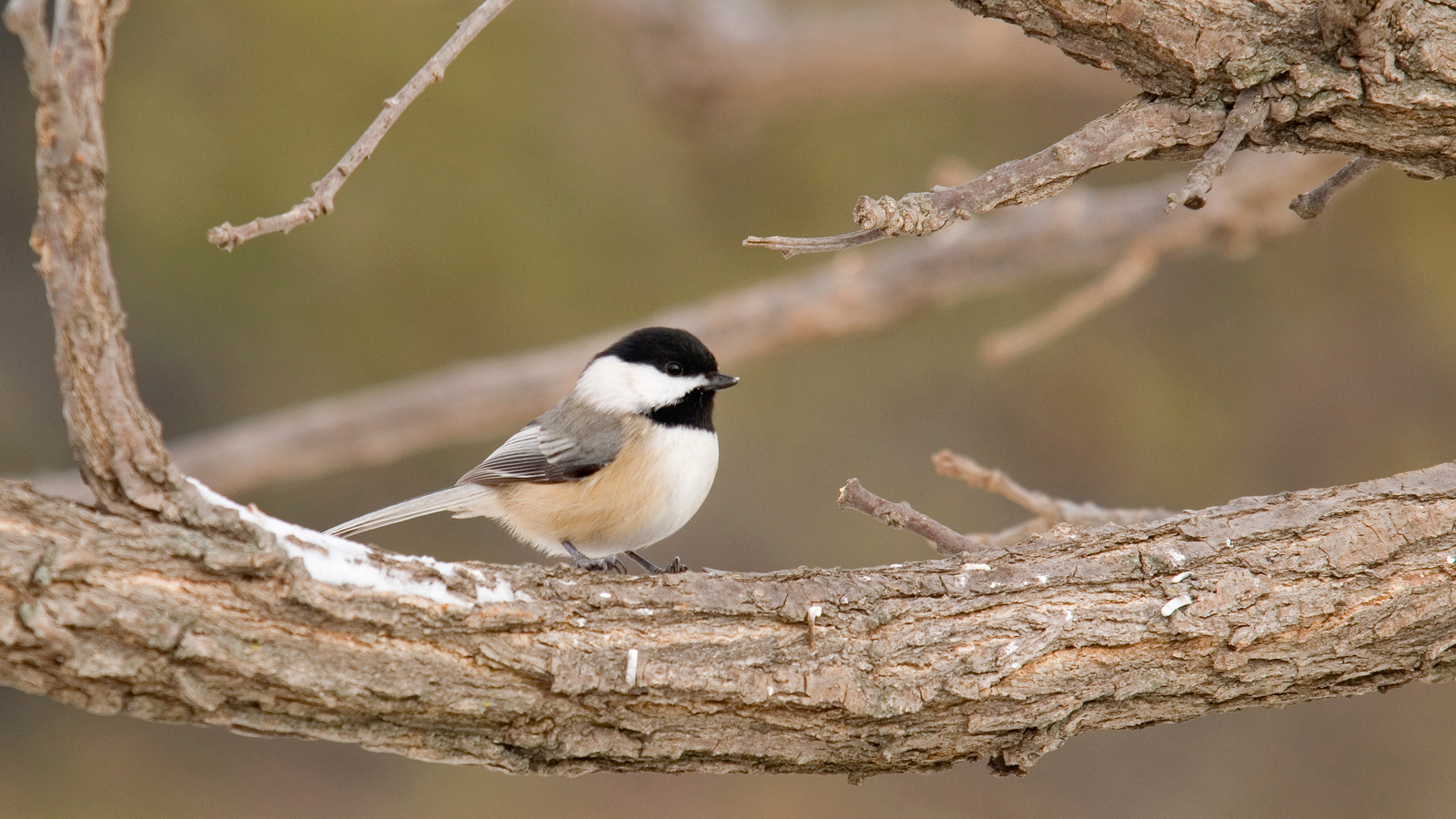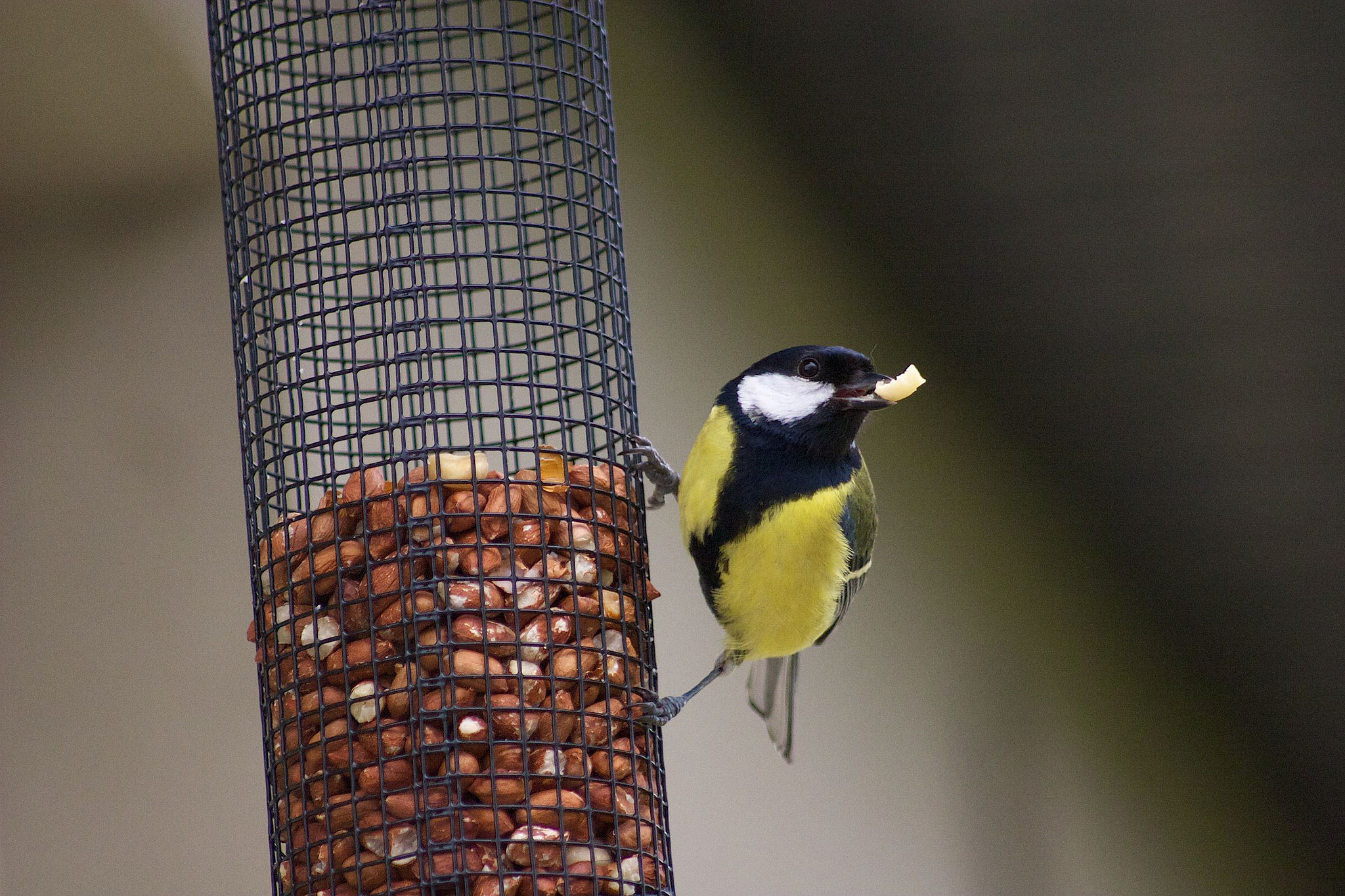Winter bird feeding is one of the most popular ways for people to interact with nature, and most do it to help birds get through these tough months. But what does this really mean for conservation? Does feeding help or hurt birds?
More than 40 percent of U.S. households feed their backyard birds, and in the United Kingdom, the rate is as high as 75 percent.
Despite the widespread popularity of bird feeding, scientists are still building a basic understanding of its impacts.
As we might guess, a number of studies show generally positive impacts of bird feeding. For example, the overwinter survival of birds is enhanced by bird feeding.
This is especially true during the coldest times, when some hungry birds might otherwise lose the battle with the elements1.
A study conducted during winter in Wisconsin showed that black-capped chickadees with access to bird seed had a much higher overwinter survival rate (69 percent) as compared to those without access to human-provided seed (37 percent survival).
Furthermore, some studies have shown that birds making it through the winter in better physical condition see those benefits carry over into the nesting season.
Bird feeding produces significantly earlier egg laying dates, larger clutches of eggs, higher chick weights and higher overall breeding success across a wide range of bird species2,6.

The greatest impact of feeding is seen when birds are most challenged, such as after particularly harsh winters, or when birds are young and inexperienced, or when they are living in low-quality habitats2. Feeding can promote the survival and reproduction of the not-quite-fittest.
But in contrast to these straightforward results – showing that bird feeding makes for better-off birds – a few studies indicate that, at least in some situations, there may be unintended consequences of bird feeding.
A European relative of the black-capped chickadee, the blue tit, was studied in the United Kingdom to examine the impact of bird feeding on nesting success.
One research group3,4 found that birds fed during winter subsequently laid a smaller number of eggs that had lower hatching success and ultimately fledged fewer young than birds that weren’t fed at all. The offspring that did fledge weighed less and had a lower survival rate than the young of unfed birds.
An additional U.K. study of the blue tit and another chickadee-like species, the great tit, had similar findings.
Both species, when they had access to bird food, laid fewer eggs, had lower hatching success, and ultimately had fewer chicks fledged.

Note, however, that these are just two studies demonstrating a negative effect of bird feeding – among a majority that show positive effects.
Nonetheless, the striking findings of lower reproductive success in supplementally fed birds need some explanation. Unfortunately, it was beyond the scope of these U.K. studies to definitively explain how bird feeding resulted in lower reproductive success, but the authors offer several possible hypotheses.
One possibility the authors suggest is that the bird feeding provided an irresistible diet that was unbalanced – too high in fat to produce high-quality eggs. More protein, micronutrients, and antioxidants than are provided by bird seed may be needed to produce high-quality eggs.
Another possibility is that bird feeding allowed individuals with a lower reproductive capacity which ordinarily would not survive the winter the chance to nest.
A final possibility is that the feeders were placed in poor quality nesting habitat – leading the birds to choose these suboptimal sites as nesting areas in the spring.
More research needs to be done across a wider geographic area and on more species to understand not only the impacts of bird feeding on reproductive success, but also on other factors such as disease transmission, species range expansion, and population trajectories.
Citizen scientists can help by participating in initiatives like Project FeederWatch that ask people with bird feeders to share their observations. What you see in your own backyard can contribute to the efforts to answer these questions.




Great information! I will go out and fill the feeders now!
I heard that if you feed the birds all summer you must feed them in the winter. Is it best to just feed them in the winter and let them fend for themselves in the summer?
Hi, My husband and I live in Riverton, Wyoming.
we began feeding birds in late fall of 2014 and continued through spring2015 . In fall 2015 we began again and are still feeding. Habitat is good, year round water and lots of vegetation. I am beginning to think it may not be a good idea to feed. We have tons of common sparrows and some races. But this year I have seen NO chickadees!! Is it climate change or is it my over feeding the sparrows?
Another strong possibility is that bird seed is probably produced using pesticides.
I live in SE Michigan in a semi-rural area near a lake. There is a wild area behind our property that is mostly wooded . I have a feeder pole at the back of my yard and I keep it stocked most of the year and all of the Winter. I have a suet feeder , a thistle feeder and a regular seed feeder. My regular feeder holds about 3 pounds of seed and I sometimes fill it twice a day. I get a wide variety of birds but mostly Sparrows of course. I get Cardinals , Finches, Chickadees, Doves. BlueJays , and Woodpeckers too.
And plenty of squirrels on the ground. My metal pole is too slippery for them to climb …I finnaly won that battle. I feel that the sheer amount of birds I get tells me that my location is important . I don’t like the expense but I enjoy seeing them and feel good about feeding.
If our gardeners planted more native plants and shrubs, the birds would have a better chance of finding natural food sources in the winter. If our gardeners left their spent plants standing through the winter, our birds would have an opportunity to pick at the seeds. We are taking away the open areas where birds can feed. We manage our gardens so they look good without a thought about natural habitats. We need to support birds somehow as we continue to take away their habitat. Research points one way, then another in many studies. I’m going to carry on and wait for more definitive recommendations.
As a long-time contributer to Cornell projects (on and off for more than 18 years; I once *meticulously* maintained a high of 15+ feeding stations on our 5-acre “certified wildlife habitat” property for ~8yrs for Project Feederwatch), and student who loved ornithology, systems thinking, and forest ecology studies in college (B.S. Env. Studies, UNH), who later worked for a very popular birding store for several years, and eventually became a trained speaker on wildlife conservation topics for UNH Cooperative Ext and NH Fish & Game, my opinion is it all depends on what you’re using for seed, whether you cycle on and off properly, and how sanitary you keep your feeders. Low quality, i.e. “cheap,” seed from big box stores, fed 24/7/365 in poorly maintained feeders, whether it’s NBD or not, is bigtime bad for birds, primarily in terms of disease, but also in terms of interfering with nature in general.
Thanks for the article. I appreciate the attention paid to the other habitat-related issues.
J. Eno
Greenland, NH
We have found that supplemental winter feeding in our area of southeastern Pima County, Arizona, has produced larger egg clutches and higher numbers of healthy, viable offspring among our local Gambel’s quail, cactus wren and house finch populations.
I’ve been feeding birds on my one acre backyard for over 23 years, it is a sanctuary for wild life, tons of flowering plants have been planted over the years to feed and maintain their life style, it’s been a trial of errors figuring out what to plant and not as between the chipmunks, squirrels rabbits and an occasional deer they can really wipe out a landscape masterpiece in one evening. I feed seed mainly thrown on the ground at different places thruout the sagebrush and around trees, away from the main yard, feeding in the brush gives them sufficient cover from the predatory birds that hunt them which I have witnessed on occasion, ? But that’s nature. Anyway I can really babble on about all ” my” wildlife, I enjoy it and I don’t feel like inhibiting their natural environment.
We just put up a feeder for the first time this fall. We are retirees who live in rural Vermont surrounded by both conifers, deciduous and fruit (apple) trees. We purchase our feed at the local Feed store in West Lebanon, NH, just across the river from where we live. We hang the feeder off of the deck on a pole so that vermin won’t be able to visit, however, we have a red squirrel that runs around the deck floorWe’ve been pleased to see chickadees, nuthatches, titmouse, junco, blue jays on a regular basis. Occasionally we will see a cardinals, both male and female, although the female seems to be the better eater. Both redheaded and hairy woodpeckers also visit, but usually when the others are not hogging the feeder. The birds stayed away for a few days after we saw the squirrel. Could that be why? Also wild turkeys and wintering Canada geese are around. Live in Quechee, just down the road from VINS.
I work at a wildlife hospital near Vancouver, BC. This winter we are recommending people take their feeders down due to an outbreak in salmonellosis in Pine Siskins. Salmonella runs on a four year cycle, and this is the fourth year, meaning we expect to see 100-200 Pine Siskins admitted showing symptoms. With an almost 100% mortality rate, the risk is too great for these flocking birds to spread disease at feeders, even if the feeders are properly cleaned. We also see increases in House Finches with avian conjunctivitis in areas where feeders are available.
None of those studies takes into consideration the bird populations on the land devoted to growing bird seed. I bet that birds are regarded as pests and kept away from the crops. Bird seed acreage has been growing exponentially in recent years. I am sure this is not good for the birds.